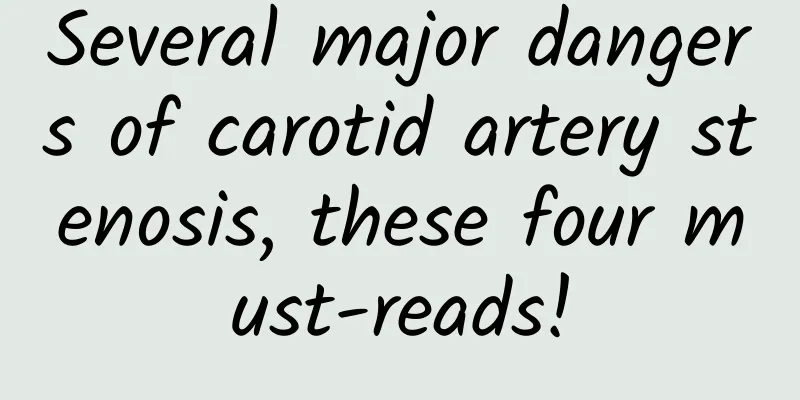[World Spine Health Day on May 21] Pay attention to children's bad posture and care for children's foot and spine health
![[World Spine Health Day on May 21] Pay attention to children's bad posture and care for children's foot and spine health](/upload/images/67f1adbbd9c2f.webp)
|
Does your baby have the following bad postures? 1. Prefer the "W" seat 2. You can't stand straight, you always hunch over or lean to one side 3. The body always leans to one side when sitting 4. The shoulder blades are tilted and the shoulder blades on the back are not at the same height 5. There are wrinkles on one side of the waist, and the hem of the top is slanted when worn. 6. Pelvic tilt, the anterior crest of the iliac bones on both sides and the buttocks of the legs are not at the same height 7. X-shaped legs, O-shaped legs or XO-shaped legs when standing 8. Walking with your feet turned inward or outward 9. When standing, the calf and Achilles tendon are not straight when viewed from behind, and there is inversion or valgus of the foot. 10. The arch of the foot is not developed, the sole of the foot is flat, there is flat feet; or the arch of the foot is particularly high 11. The big toe of the foot is deformed, the bone on the inside of the foot is protruding, and there is hallux valgus 12. Likes to walk on tiptoes May 21, 2023 is the 13th World Spine Health Day. In recent years, scoliosis in children and adolescents has become an important factor affecting the health of children and adolescents in my country after obesity and myopia. However, scoliosis has no obvious symptoms in the early stage and is easily ignored. When it is discovered, the golden period of early correction has often been missed. This situation has attracted great attention from my country's education and health administrative departments, and early screening for abnormal posture and scoliosis has been included in the health examination items for primary and secondary school students in my country. Scoliosis, also known as scoliosis, refers to the lateral curvature of one or more segments of the spine, forming a spinal deformity with an arc. In recent years, excessive study pressure, lack of exercise and sleep have caused an increase in the number of children and adolescents with scoliosis in my country, and the severity has increased. According to statistics, the number of people with scoliosis in my country exceeds 3 million, increasing at a rate of 300,000 per year, and has become the third largest "killer" of the health of children and adolescents in my country. The incidence of scoliosis in adolescents in my country is about 3% to 5%. The most common is adolescent idiopathic scoliosis, with an incidence of about 2% to 4% in the age group of 10 to 16 years old, and the incidence is higher in girls than in boys. It can occur at any stage of children and adolescents, and is most common in the period of rapid growth and development, such as 1 month after birth, 6-24 months of age, 5-8 years old, and 11-14 years old, which are the peak periods of height development and the key period of growth and maturity. The most common occurrence of spinal curvature occurs in early adolescence. How to self-diagnose scoliosis at home? The child wears a small vest or tights and faces a mirror, stands with feet shoulder-width apart in a natural upright position, and observes the following situations. If any of the following is "yes", the visual inspection method is positive. 01 Check whether the shoulders are level: The two shoulders are not at the same height, one shoulder is higher than the other 02 Check whether the shoulder blades are level: the shoulder blades are tilted, and the shoulder blades on the back are not at the same height 03 Look at the pelvis and waistline: the pelvis is tilted, there are wrinkles on one side of the waist, and the hem of the top is tilted 04 Bend over to check the height of the back: bend the waist forward until the back is parallel to the ground, feet are shoulder-width apart, arms hang naturally, knees are straight, and palms are facing each other; the examiner observes along the vertebrae from the back of the patient and records whether the spine is symmetrical, whether the shoulders are parallel to the ground, whether the shoulder blades are symmetrical, whether the hips are parallel to the ground, whether the midlines of the head and pelvis coincide, and whether the ribs are raised. If any of the items is "yes", it is a positive Adams flexion test. X-shaped legs, O-shaped legs, XO-shaped legs How to do self-test at home? Children wearing shorts or tight pants stand in front of a mirror with their legs together and in a naturally upright position. Observe the following: 01 If the ankles and knees can be brought together, the legs are relatively straight and can be brought close to each other, and the leg shape is normal 02If your knees can be brought together but your feet cannot, you may have X-shaped legs. 03 If your feet can be brought together, but your knees cannot be brought together and your knees are spread out, you may have bow legs. 04If there is no problem with your knees and feet, but your calves (tibias) are far apart, then you may have type XO legs. How to self-check your foot and ankle posture at home? The child rolls up his trouser legs, stands on a hard surface, stands with his feet shoulder-width apart and maintains a natural upright position, and observes the following: 01 From the back, the calf and Achilles tendon are not perpendicular to the plane, and the heel axis is deflected to the outside, indicating possible foot valgus. 02 From the back, the calf and Achilles tendon are not perpendicular to the plane, and the heel axis is deflected inward, indicating possible inversion of the foot 03 Spread your legs and look at the arch from the inside. If the inside of the arch is flat and directly attached to the ground, it indicates that you may have flat feet. 04 Spread your legs and look at the arch of your foot from the inside. If the arch is particularly high, it may indicate high arch foot 05Looking at the big toe from the front, the big toe is deformed and the bone on the inside of the foot is protruding, indicating the possibility of toe valgus Testing at home for the above symptoms What tests will be done at the hospital? 01Physical examination, Adams flexion test, spinal sagittal curvature examination, etc. 02 Select imaging examinations based on the child’s symptoms: standing full spine anteroposterior and lateral X-rays, hip, knee and ankle anteroposterior and lateral X-rays, etc. 03Select other tests based on the child’s symptoms: cardiac function test, pulmonary function test, bone density test, developmental maturity test, gross motor function assessment, other functional assessments, etc. What are the consequences if scoliosis is not diagnosed and treated in time? 01The spine grows rapidly. If not diagnosed and treated in time, the degree of scoliosis may gradually worsen with growth and development. 02 Mild cases may cause back pain and affect appearance; severe cases may develop into serious deformities 03 Not only does it cause spinal movement dysfunction or lameness due to pelvic tilt, but it also causes heart and lung dysfunction due to chest deformity. In a few cases, it may cause spinal cord compression, leading to lower limb paralysis or defecation dysfunction. What are the consequences if abnormal knee, ankle and foot posture is not diagnosed and treated in time? 01 Abnormal walking posture and abnormal musculoskeletal development, which affect the development of the pelvis and spine upwards and the development and movement of the feet and ankles downwards. 02It may affect children's ability to run, jump, speed, coordination and balance, and affect athletic performance and sports results 03Extended abnormal posture may cause muscle and joint pain, etc. If your baby has the above bad postures, then parents should pay attention to it and seek medical attention in time! If children adopt incorrect postures for a long time, it will cause irreversible damage to the spine, pelvis, knees, ankles, etc. Scoliosis should be prevented, especially for adolescent scoliosis, early detection, early diagnosis, and early treatment. We call on parents to pay attention to children's body shape and posture, and care about children's spinal health and ankle health! Source: Children's Rehabilitation Committee of the Chinese Rehabilitation Medicine Association Author: Li Xin, attending physician of the Department of Pediatric Neurology, the Third Affiliated Hospital of Jiamusi University; Luan Tianming, deputy director of the Department of Physical Therapy, the Third Affiliated Hospital of Jiamusi University Reviewer: Guo Lanmin, Professor, Vice President of the Third Affiliated Hospital of Jiamusi University The popular science content of this platform has been funded by the China Association for Science and Technology's Science Popularization Department's 2022 National Science Literacy Action Project "National Society Science Popularization Capacity Improvement Project-Rehabilitation Science Popularization Service Capacity Improvement Action Plan" |
<<: The benefits of sweating while running in summer
>>: Sugar-free drinks are not healthy. Sweeteners have these 5 major harms to the body.
Recommend
International Acromegaly Awareness Day | Do people become "uglier" as they age? Swollen hands and feet, high blood pressure may be the reason...
As people age, they may notice that their cheekbo...
Seven months pregnant fetal movement like heartbeat
When you are seven months pregnant, you can clear...
Will taking progesterone pills make you fat?
In clinical medicine, many drugs contain certain ...
During the epidemic, have you mastered the skills to cope with body changes and measure body temperature?
After the epidemic became normalized, taking body...
Crack in the middle of the nipple
The situation of cracking in the middle of the ni...
Things to note when taking wedding photos
People who are planning to get married will take ...
What do the three phases of Jingzhe mean? What are the three phases of Jingzhe?
The Jingzhe solar term means that the weather sta...
Why do jasmine flowers always have insects? How to solve the problem of insects in domestic jasmine?
Jasmine is a very common flower in life. Because ...
Can I eat duck neck during menstruation?
Menstruation is a critical period for female frie...
Why is Pu'er tea called Seven Cake Tea? How is Daxueshan Pu'er Tea?
In life, there are many friends who love to drink...
What is the cause of pain on the left side of a woman's lower abdomen?
The left side of the female lower abdomen is a ve...
The pain of raising your hand!
Grandma Zhou: Doctor Chen, my shoulder has been h...
What causes groin pain in women?
For women, it is very common to have back pain in...
Health Tips | Should you induce vomiting if you have food poisoning? In these situations, you should not induce vomiting →
If you have food poisoning, you should induce vom...
Early pregnancy belching
Pregnant women are a very vulnerable group of peo...









